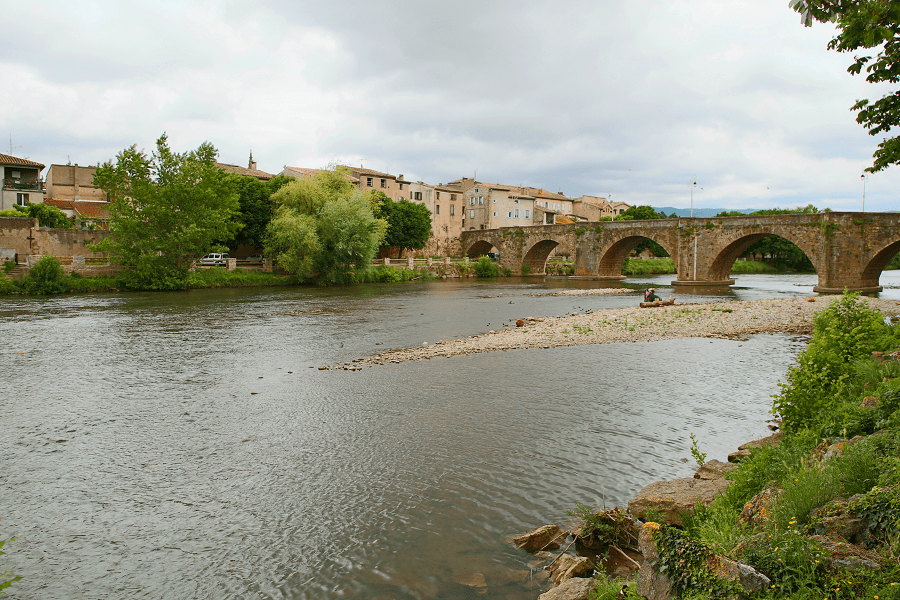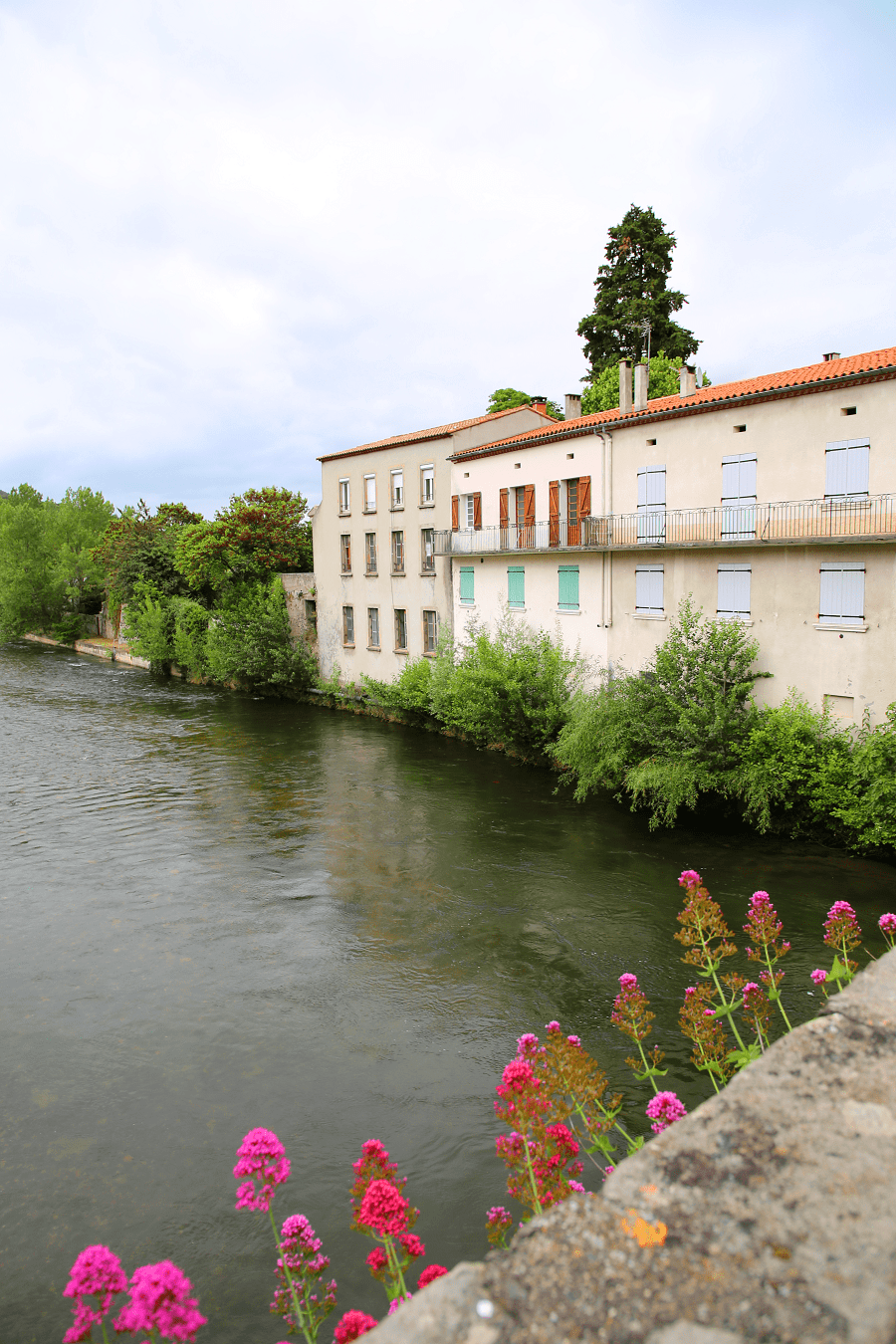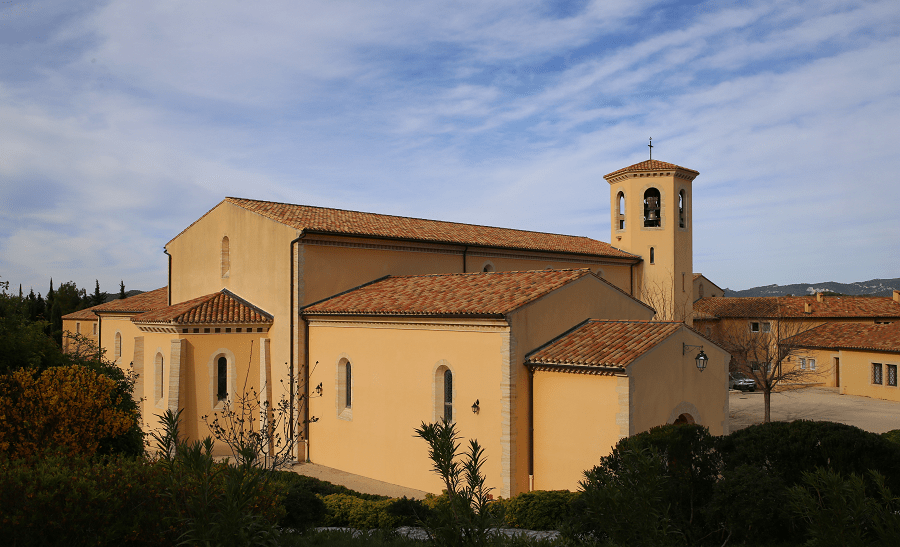The Aude is a river in southern France, whose 223.6 kilometer course runs through the Occitania region, from the Catalan Pyrenees to the Mediterranean Sea.
It gives its name to the Aude department.
In ancient times, the Roman’s called Aude “Atax.” Some ancient authors, such as Polybius, named the river Narbôn.
In 1342, the Roussillon cartulary of Alart called it the Auda or Ribera d’Aude. In the Middle Ages, the Aude was also referred to as Adice, Atax again, Fluvium Atacis, Flumine Atace, Flumen Ataze or Juxta Aditum fluvium. In all likelihood, the current name comes from a progressive evolution of Atax, given by Strabo in his geography, a word borrowed from the Gallic term atacos, meaning “fiery” or “very fast.”
It is registered as essential to the Languedoc region.
The river has its source in the Massif Carlit of Carlit at the Lac d’Aude at an elevation of 2,185 metres (7,169 ft) in the commune of Les Angles (department of Pyrénées-Orientales) and flows parallel to the Tet, passing through Matemale Lake. The Col de la Quillane, elevation 1,713 metres (5,620 ft), marks the boundary of the watershed.
The river then flows into the Mediterranean Sea, a few kilometres from Narbonne at Grau de Vendres (near Cabanes-de-Fleury) on the border between the departments of Aude and Hérault.
At its source, it is oriented north-south. Then, the Aude presents the characteristics of a mountain stream as it traverses Capcir and feeds several reservoirs (Matemale, Puyvalador) before plunging into gorges (those of Saint-Georges are the most scenic) crossing ancient terrain. Starting from Axat, after being joined by the Aiguette on the right bank and the Rébenty on the left bank, the river flows through bands of pre-Pyrénéen limestone (in the Pierre-Lys Gorges) and passes through a series of small communes: Quillan, Espéraza, Couiza, Alet-les-Bains, then Limoux.
From Carcassonne, the river calms down and follows the great tectonic furrow separating the Pyrenees (Massif Corbières) from the Massif Central (Montagne Noire), receiving from these reliefs a series of tributaries, the main ones being the Orbieu on the right bank and the Argent-Double and Cesse on the left bank. Next, bordered by the Canal du Midi and winding among the vineyards, the Aude enters the broad alluvial plain of Narbonne, partly conquered from the Gulf of Lion and dotted with sites of ancient ponds, before flowing into the Mediterranean Sea.
Aude crosses four departments, and seventy-five municipalities distributed as follows (non-exhaustive list):
Pyrénées-Orientales: Les Angles, Matemale, Formiguères, Réal, Puyvalador;
Ariège: Quérigut, Carcanières, Le Puch, Rouze;
Aude: Escouloubre, Fontanès-de-Sault, Aunat, Bessède-de-Sault, Le Clat, Roquefort-de-Sault, Sainte-Colombe-sur-Guette, Artigues, Axat, Saint-Martin-Lys, Belvianes-et-Cavirac, Quillan, Campagne-sur-Aude, Espéraza, Couiza, Montazels, Luc-sur-Aude, Alet-les-Bains, Cournanel, Limoux, Pieusse, Cépie, Pomas, Rouffiac-d’Aude, Preixan, Couffoulens, Cavanac, Carcassonne, Villedubert, Berriac, Trèbes, Fontiès-d’Aude, Floure, Barbaira, Marseillette, Capendu, Blomac, Douzens, Puichéric, Saint-Couat-d’Aude, Roquecourbe-Minervois, La Redorte, Castelnau-d’Aude, Azille, Homps, Tourouzelle, Argens-Minervois, Lézignan-Corbières, Roubia, Paraza, Canet, Ventenac-en-Minervois, Raissac-d’Aude, Saint-Nazaire-d’Aude, Marcorignan, Saint-Marcel-sur-Aude, Moussan, Salleles-d’Aude, Cuxac-d’Aude, Narbonne, Coursan, Salles-d’Aude, Fleury;
Hérault: Olonzac, Lespignan, Vendres.
See here Pyrenees travel guide
See here France travel guide
See here Spain travel guide















